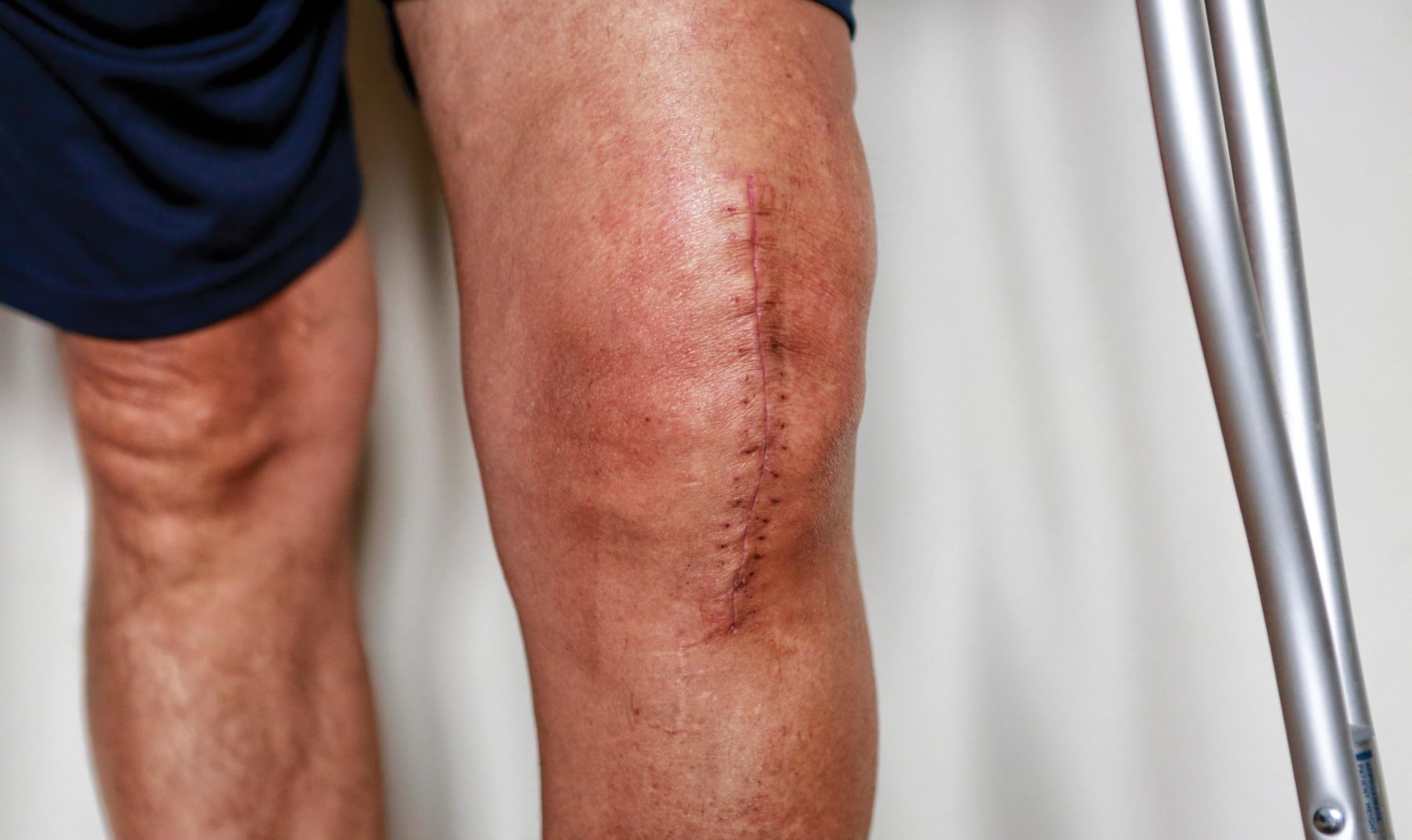Tissue Issues

I had made it almost 25 years of playing organized soccer with nary a knee injury. Then, at 28 years old, during an adult beginner’s league indoor soccer game, I heard every soccer player’s worst nightmare: Snap! Pop!
🎶 In the arms of an angel, fly away from here…
Despite avoiding major injury during my more competitive years, it was a sprint to beat a 40-something dude sporting a tee with a tech pun across his front to a long ball down the sideline that did me in. As my patella floated around my knee — exactly like Dwight’s stapler in a jello mold — I remember assuming that recovery would be frictionless, painfully unaware that my journey to recover from an ACL and MCL tear would be a long and arduous one.
I had corrective surgery three months after my injury in January 2017 and spent that entire year rehabilitating my right knee. Three months in, much to my delight, my physical therapist dubbed me graduated. At six months post-op, however, I decided to go see my sports therapist/chiropractor as I was still experiencing some pain and stiffness during certain movements, and my flexion and extension were certifiable garbage. After six more months of a cocktail of therapies, my chiropractor encouraged me to request an MRI, as they had suspicions that screw debris leftover from surgery might be what’s causing my progress to come to a screeching halt.
Two dubious orthopedic surgeons and one overpriced, radioactive nap later, it was confirmed: there were two pieces of a broken screw floating around in my knee, causing massive amounts of scar tissue to build up around the objects, as well as my incision site. So, at almost one year post-op, I was back under the knife for more correction.
From a fitness perspective, the last three years have been frustrating, to say the least. While I’ve almost gotten complete flexion in my knee, I’m still working to release the stifling amounts of scar tissue built up in my right knee.
What even is scar tissue, and why should you give a rip about it?
Scar tissue is the body’s natural response to damage. Cuts, burns, sores and surgical incisions alike — each of these injuries trigger our bodies to produce external scar tissue. But unlike your skin’s multidirectional collagen protein pattern, scar tissue collagen proteins grow in a single direction, making it much less elastic. This lack of elasticity can cause scars and the surrounding skin to feel tight, restricting your range of motion and often inducing pain.
As active humans, we rely on our bodies’ ability to possess full range of motion in our joints in order to remain strong, healthy and injury-free now and long into our golden years. But if left unchecked, lingering scar tissue in the wrong places can restrict range of motion, create compensatory patterns in our movement and, as a result, open the door to a whole new family of aches, pains, tweaks, pulls and, yes, even tears. Nobody wants that outcome, so what can we do to mobilize our scars and break up problematic tissue? Allow me, a scar tissue professional, to light the way:
5 Ways to Self-Treat Your Scar Tissue to Improve Mobility
- Self-massage the scar: This is by far the simplest way to mobilize the scar on your own, but it requires consistency. Massage the area for at least five minutes a day, and if you were my physical therapist, you would have told me to do it three times a day.
- Give the Graston technique a go: This PT uses an actual butter knife to perform this technique, but if you don’t trust yourself with dull objects, you can buy a Graston tool on Amazon. This little, silver lifesaver worked wonders for me — almost instantly providing relief by breaking up crunchy tissue around my scars.
- Try flossing (voodoo tape): The theory with flossing is to offer short spurts of high compression throughout the day to help break up tissue and increase blood flow to a joint (eventually, hopefully, increasing range of motion and limiting pain). About two minutes is all you can muster with this technique.
- Apply topical treatments: When paired with appropriate therapeutic techniques, topical treatments can help speed the healing process along. Silicone scar sheets, creams and oils rich in vitamin E and aloe are what we’re looking for here.
- Employ vibration or wave tools: Again, when paired with other appropriate techniques, massage guns and muscle stimulators can offer some additional healing support by sending movement and waves into your tissue, increasing blood flow to the damaged area. You’ll find our massage gun near the TV to feed two birds with one scone.
Then, if six months go by and you see no progress in your tissue issues and you declare yourself formally made of cement, find yourself a sports performance therapist who can give you deeper, more advanced treatment and tell you to calm down.
About the Author
Sadie Flynn is a CrossFit Level 2 Trainer and former collegiate athlete with a penchant for power lifts. As a new mom, Sadie is deeply passionate about pregnant and postpartum fitness and wellness and works hard to help women take care of their bodies before, during and after birth. When she’s not coaching at CrossFit Renew or forcing her 90s alternative music beliefs upon you, you can find her somewhere outside with a beer, her husband, two dogs and their rambunctious toddler.






